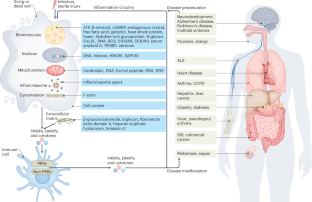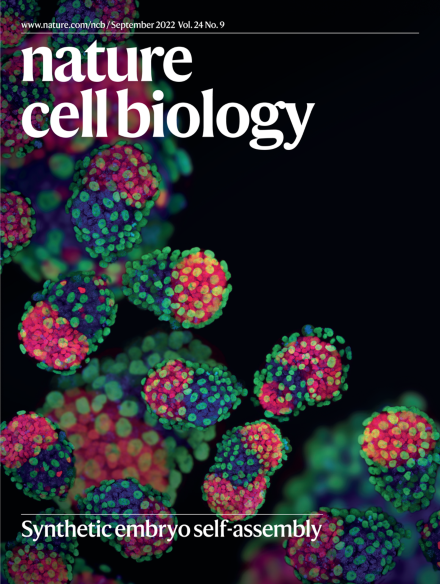Innate immune sensing of cell death in disease and therapeutics
IF 17.3
1区 生物学
Q1 CELL BIOLOGY
引用次数: 0
Abstract
Innate immunity, cell death and inflammation underpin many aspects of health and disease. Upon sensing pathogens, pathogen-associated molecular patterns or damage-associated molecular patterns, the innate immune system activates lytic, inflammatory cell death, such as pyroptosis and PANoptosis. These genetically defined, regulated cell death pathways not only contribute to the host defence against infectious disease, but also promote pathological manifestations leading to cancer and inflammatory diseases. Our understanding of the underlying mechanisms has grown rapidly in recent years. However, how dying cells, cell corpses and their liberated cytokines, chemokines and inflammatory signalling molecules are further sensed by innate immune cells, and their contribution to further amplify inflammation, trigger antigen presentation and activate adaptive immunity, is less clear. Here, we discuss how pattern-recognition and PANoptosome sensors in innate immune cells recognize and respond to cell-death signatures. We also highlight molecular targets of the innate immune response for potential therapeutic development. Man and Kanneganti discuss how pattern-recognition sensors in innate immune cells recognize and respond to cell-death signatures, and highlight molecular targets for potential therapeutic development.


疾病和治疗中的细胞死亡先天免疫感应
先天性免疫、细胞死亡和炎症是健康和疾病许多方面的基础。先天性免疫系统在感知到病原体、病原体相关分子模式或损伤相关分子模式时,会激活溶解性、炎症性细胞死亡,如热凋亡和泛凋亡。这些由基因定义和调控的细胞死亡途径不仅有助于宿主抵御传染病,还能促进导致癌症和炎症性疾病的病理表现。近年来,我们对其基本机制的了解迅速加深。然而,先天性免疫细胞如何进一步感知凋亡细胞、细胞尸体及其释放的细胞因子、趋化因子和炎症信号分子,以及它们如何进一步放大炎症、触发抗原递呈和激活适应性免疫,目前还不太清楚。在这里,我们将讨论先天性免疫细胞中的模式识别和 PANoptosome 传感器如何识别细胞死亡信号并做出反应。我们还强调了先天性免疫反应的分子靶点,以开发潜在的疗法。
本文章由计算机程序翻译,如有差异,请以英文原文为准。
求助全文
约1分钟内获得全文
求助全文
来源期刊

Nature Cell Biology
生物-细胞生物学
CiteScore
28.40
自引率
0.90%
发文量
219
审稿时长
3 months
期刊介绍:
Nature Cell Biology, a prestigious journal, upholds a commitment to publishing papers of the highest quality across all areas of cell biology, with a particular focus on elucidating mechanisms underlying fundamental cell biological processes. The journal's broad scope encompasses various areas of interest, including but not limited to:
-Autophagy
-Cancer biology
-Cell adhesion and migration
-Cell cycle and growth
-Cell death
-Chromatin and epigenetics
-Cytoskeletal dynamics
-Developmental biology
-DNA replication and repair
-Mechanisms of human disease
-Mechanobiology
-Membrane traffic and dynamics
-Metabolism
-Nuclear organization and dynamics
-Organelle biology
-Proteolysis and quality control
-RNA biology
-Signal transduction
-Stem cell biology
 求助内容:
求助内容: 应助结果提醒方式:
应助结果提醒方式:


